Chain Reaction (2016)
A series of interventions in public space in the Styrian town of Eisenerz. Collaborative work with the Daily Rhythms Collective—Nayarí Castillo, Sara Gonzáles Novi, Tuuli Sundén, Inka Ylikotila. Commissioned by eisenerZ*ART.
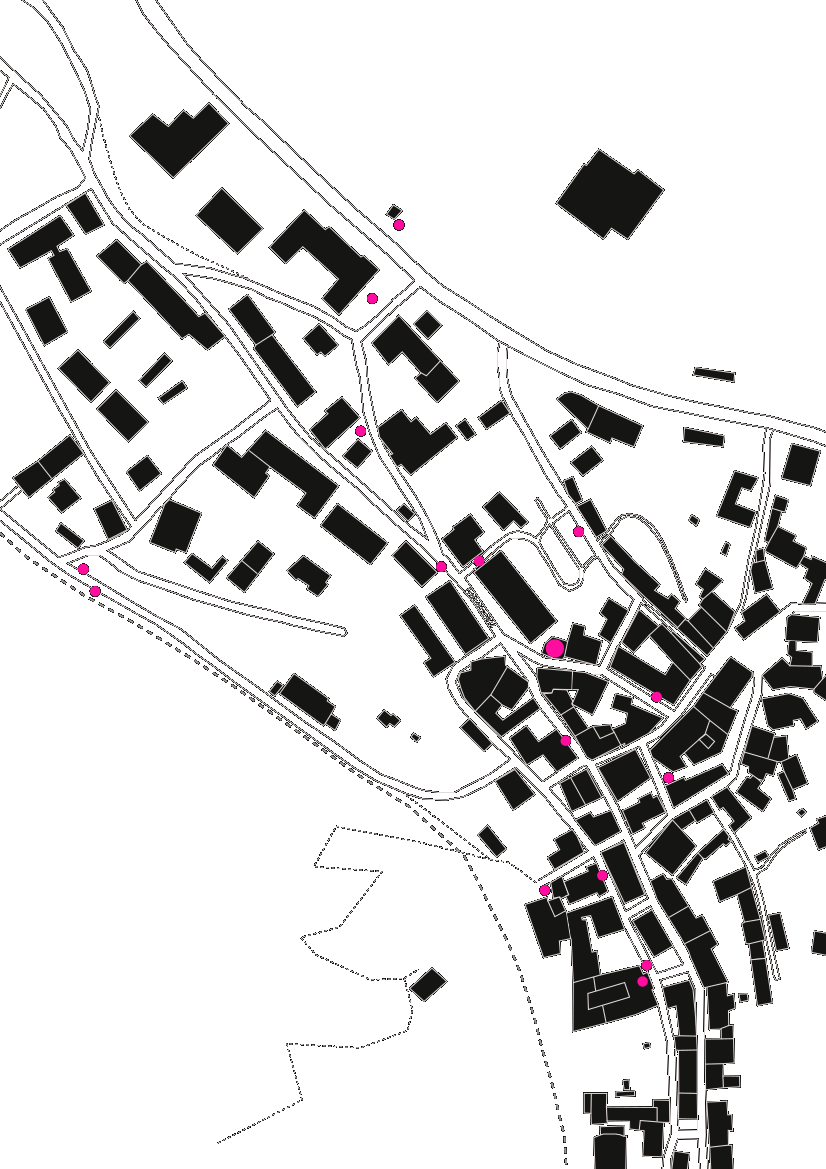
In this collaborative work, the group of five artists continued to develop their concept of “spatial acupuncture”, a method by which interventions are placed in public space that draw attention to (in our eyes) significant details, details that characterise a site even though they might be considered negligible. The interventions range from very minimal forms of marking to the alteration of perception or the insertion of objects and sounds. The title Chain Reaction both points to our working process in which the components are developed in situ and each time responding to the previously created ideas and components, as well as the chemical process—the town of Eisenerz is named after its economy of iron ore mining, historically significant and still performed today, although in the meantime many jobs have been replaced by automation, subjecting the town to a demographic decline. The shapes and materials chosen for our inventions are inspired both by the element of iron and its mineral compounds, as well as the particular texture of an increasingly empty and idle space, questions of time perception.
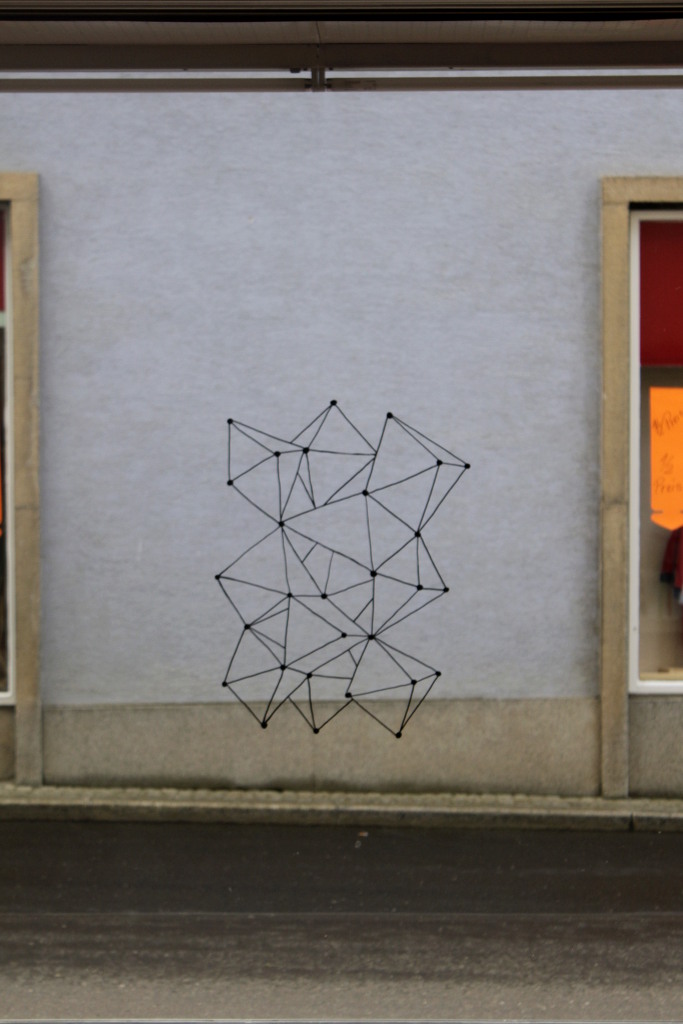
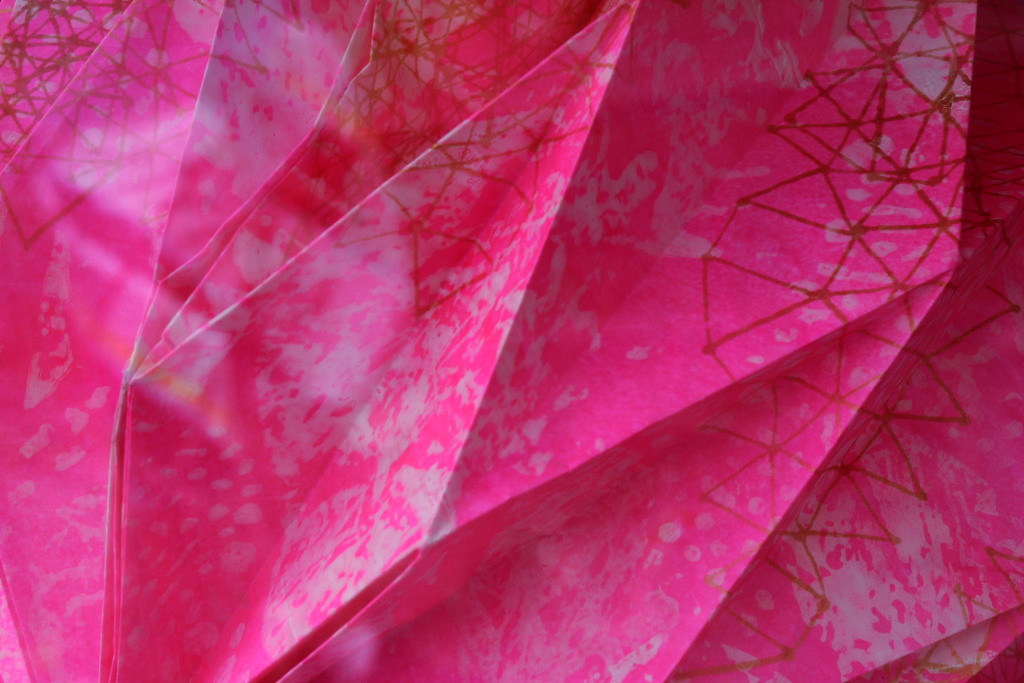
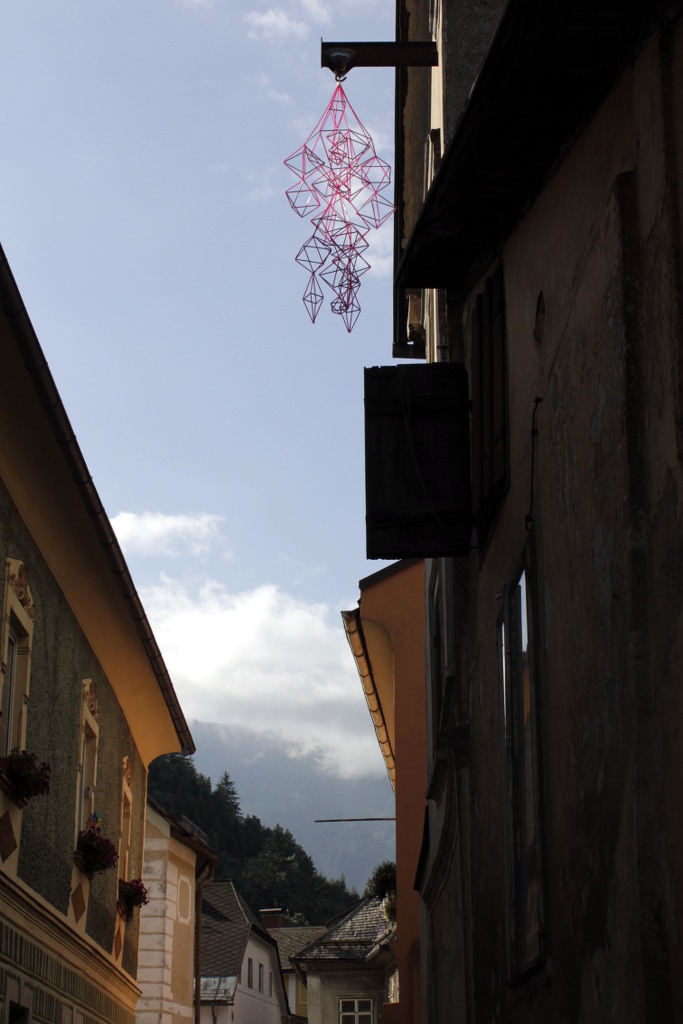
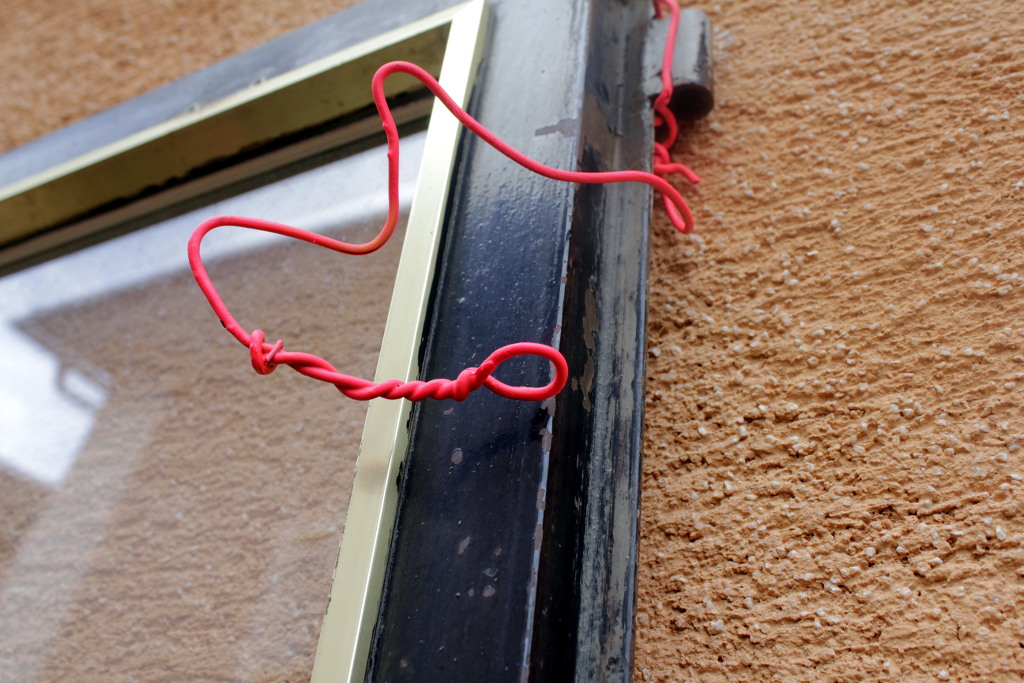
Working in a sort of residency, we set up a temporary laboratory at the Freiraum art space (large dot in the map above), and selected fifteen locations (smaller dots in the map above) around the town centre. A number of tours are organised along a route connecting these points, and maps are available for individuals that want to explore the interventions on their own. For the observant passerby, the locations are recognisable by the use of a pink/magenta colour code, chosen for its contrast with the palette of the existing landscape. The formats include the insertion of coloured stones into the fissures of a drive way, the reuse of empty signals (a drawing of Santa Barbara, patroness of the miners), and the attachment of text fragments that poetically and playfully comment on their surroundings.

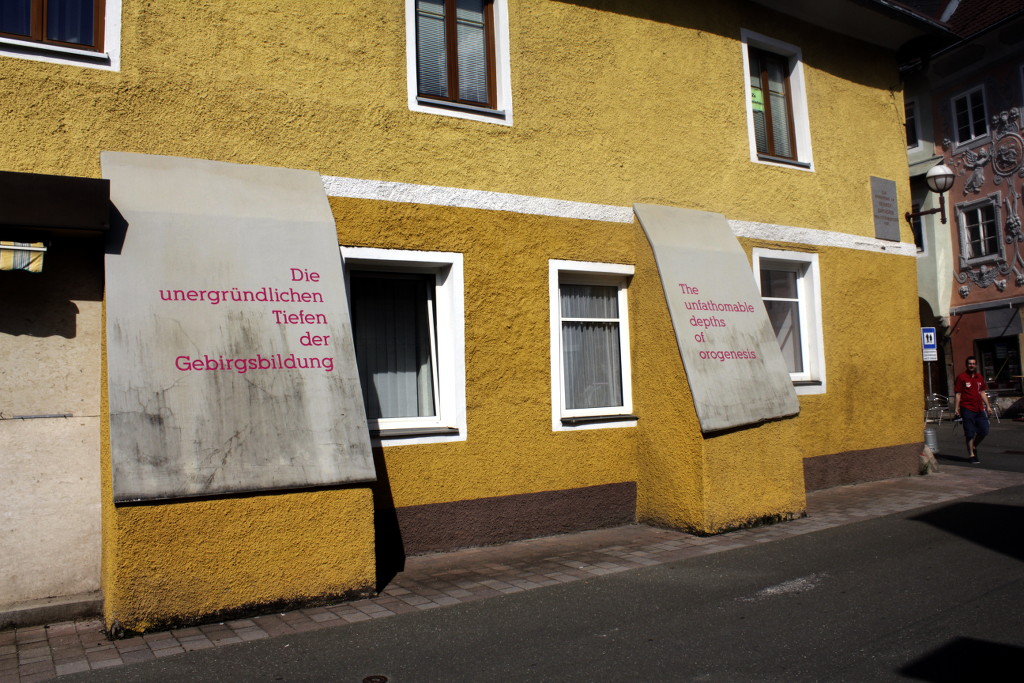

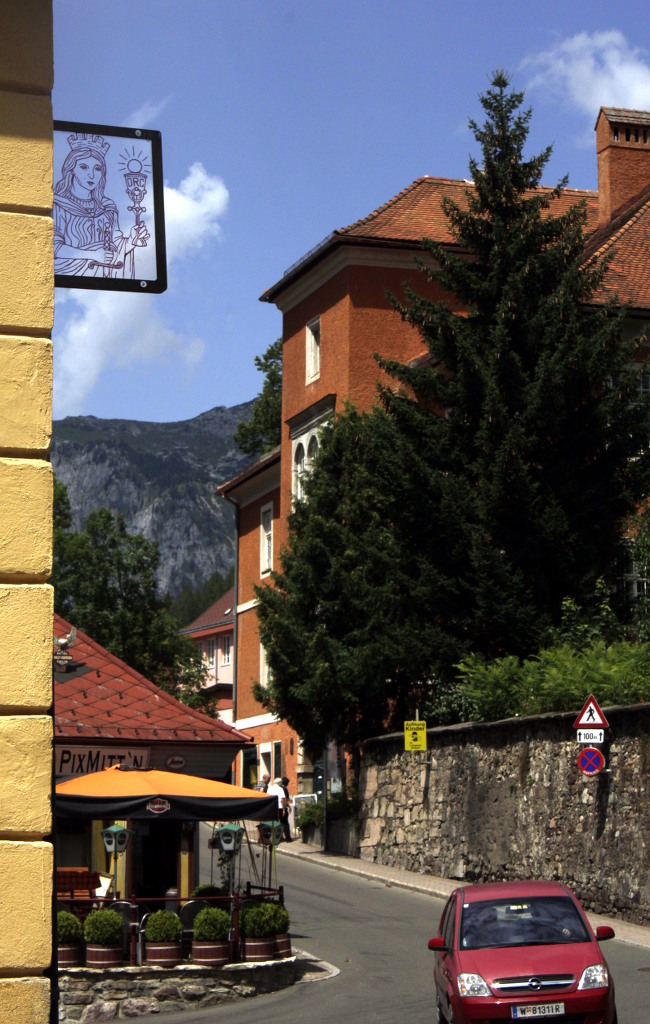
Another approach we worked with was long-term photographic exposure. Two constrasting techniques were employed. One uses the digital camera module of a Raspberry Pi miniature computer that was deployed in various buildings and spots across the town. A specially created signal process integrates the images thus taken by “developing” only the differences that occur over time. This leads to peculiar pictures where for example the movement of people or cars is foregrounded or where the changes in nature, such as reflections of light on water, the movement of clouds or plants in the wind are amplified. A few of these pictures were attached in the town, for example selecting an empty direction sign near the location where the photograph was taken (from inside a downpipe that was in turn marked with colour).
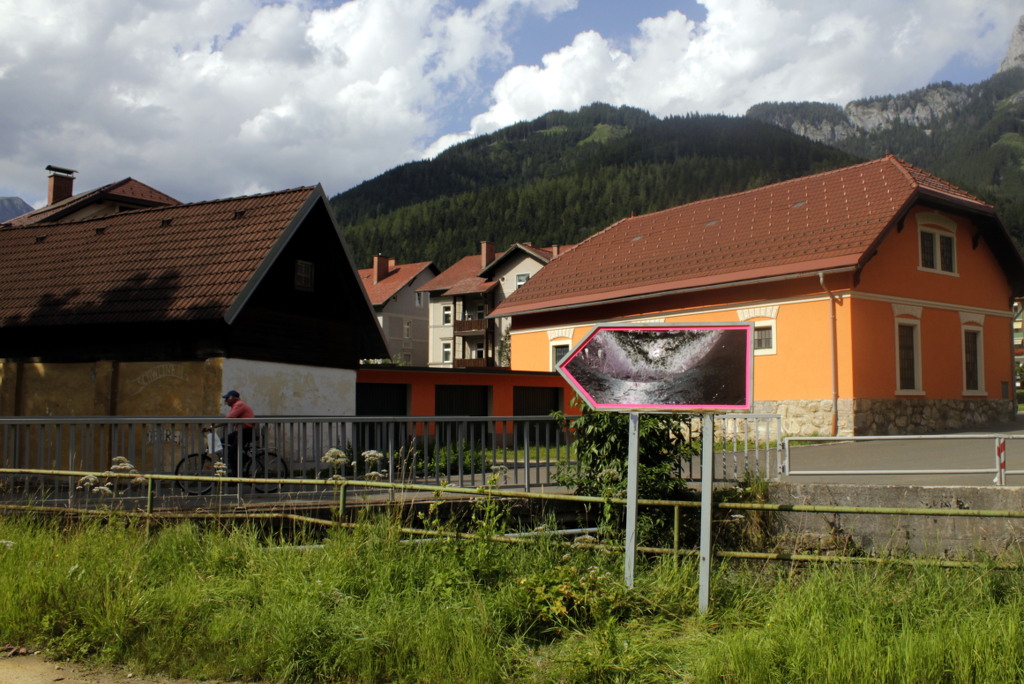
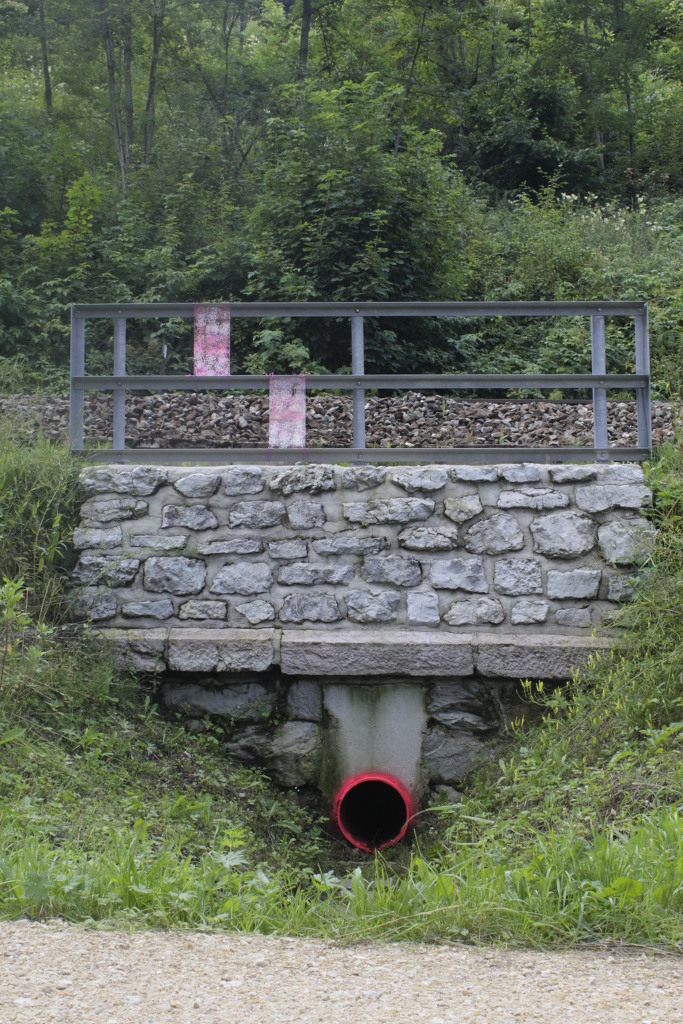
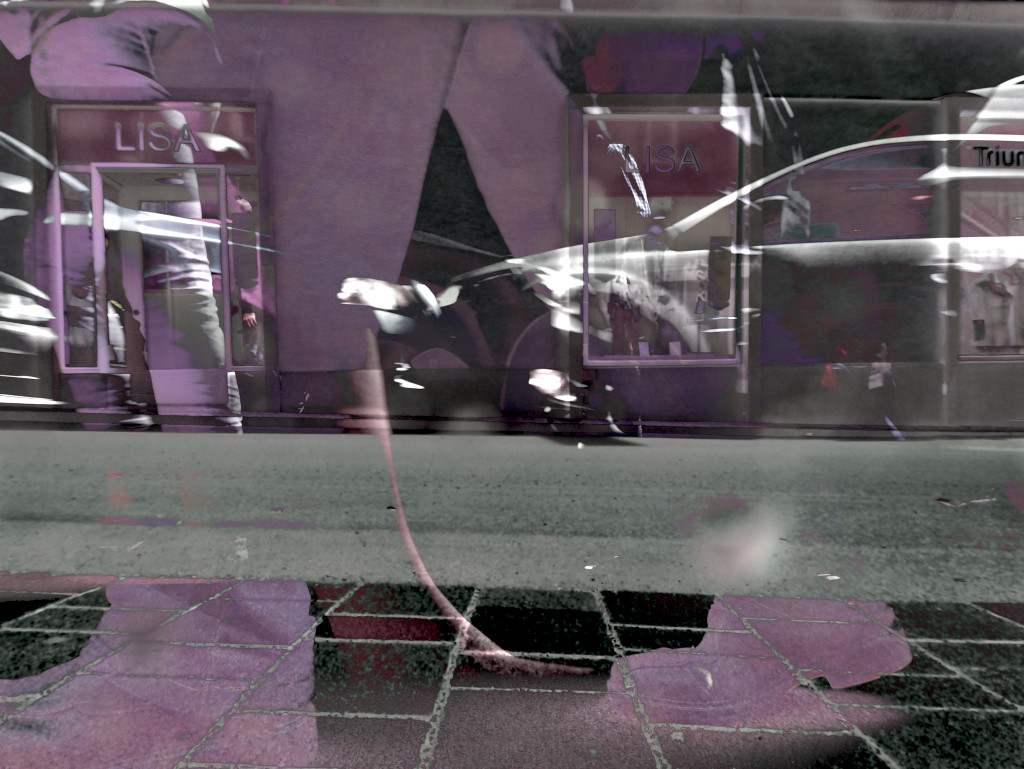
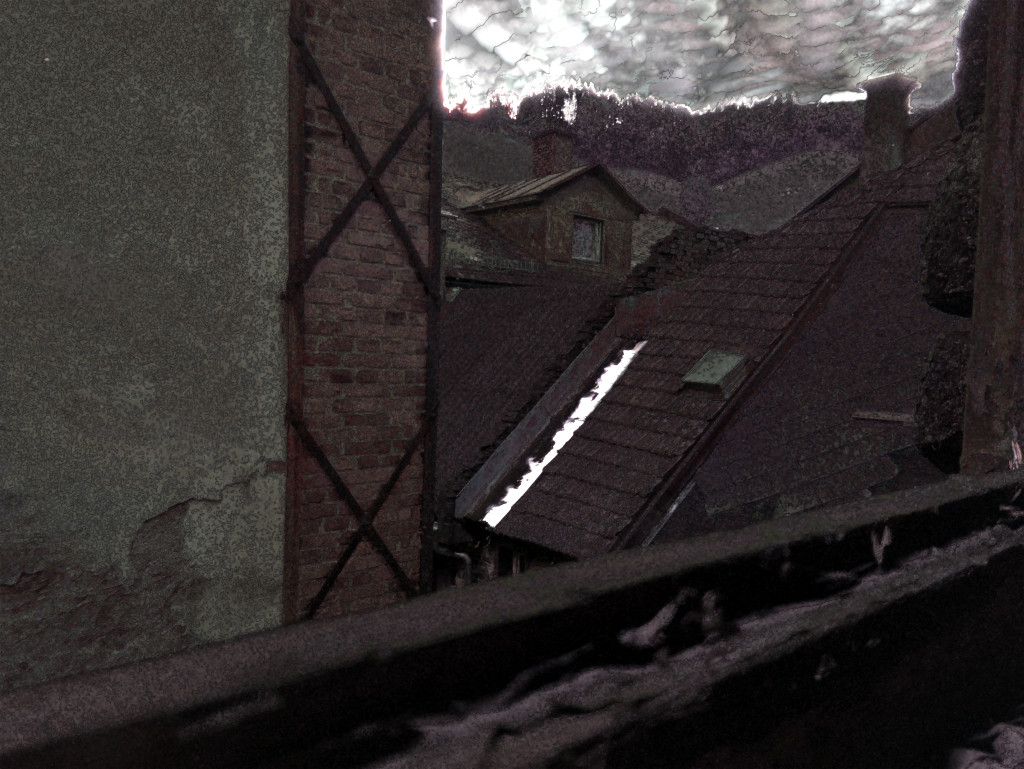
The other technique uses analogue photographic exposure through pinhole cameras, self-made devices that can be mounted anywhere from bushes and trees to lampposts. While each digital process ran for around an hour and a half, the pinhole cameras had to be exposed for a day and a half. Like a traditional long-term exposure, these photographs integrate all the changes over time, often reacting to particular lightning situations or ambient conditions such as rain. The resulting series is characterised by an eerie and blurry atmosphere in blue-greenish colours with strange artifacts. A selection of these photos were displayed in the window of the Freiraum art space.
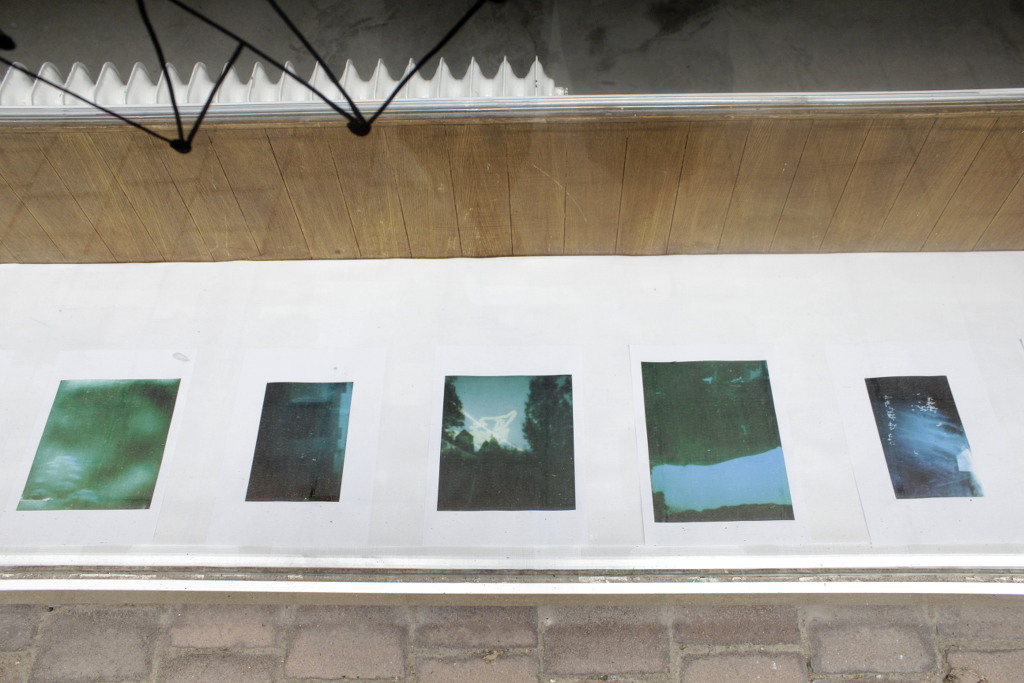
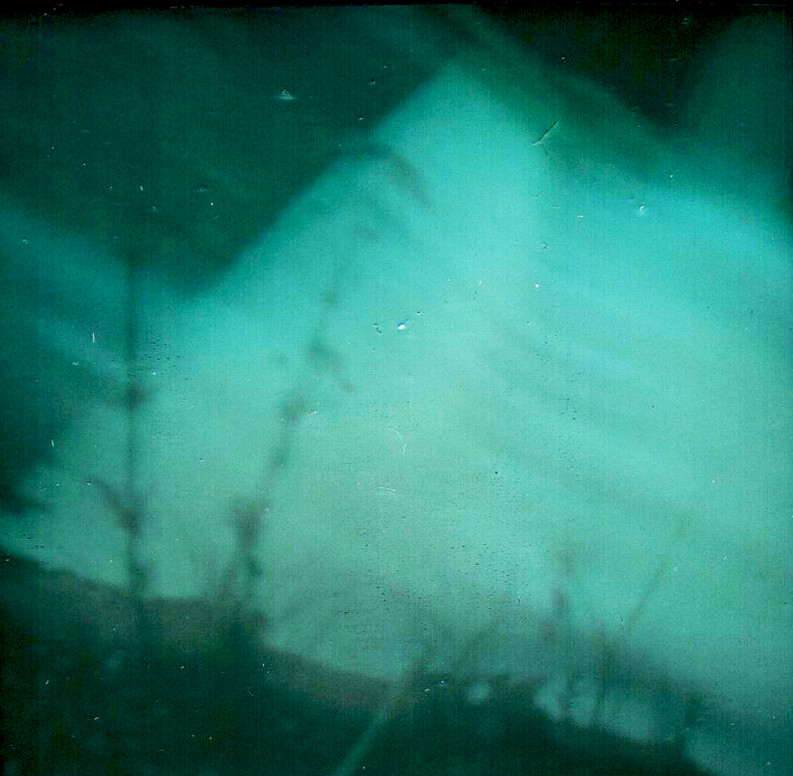
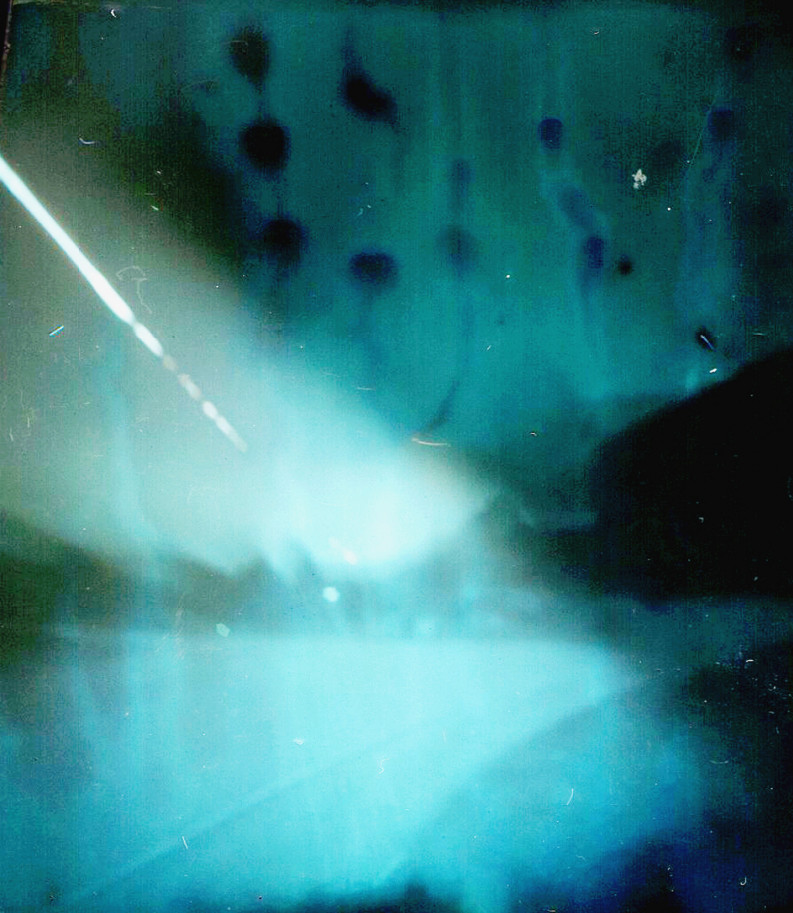
Also in this space is a mural showing a 270° panoramic contour of the surrounding mountain landscape, and the first of two sound installations, Accel, that projects an accelerated and compressed image of the outside soundscape onto a table with glass plates. The second sound installation, Zero-Phase, can be heard out of the cellar window on one of the turning points of the circuit, with a conceptually linked text installation on the outside wall. The sound installations are are described separately and in more detail here. The sound material of Zero-Phase was recorded in a former carpenter’s workshop, a beautiful derelict building spanning the Erzbach river and one of the locations chosen for intervention. Here, coloured rope is tied up to the rails on both sides of the river.
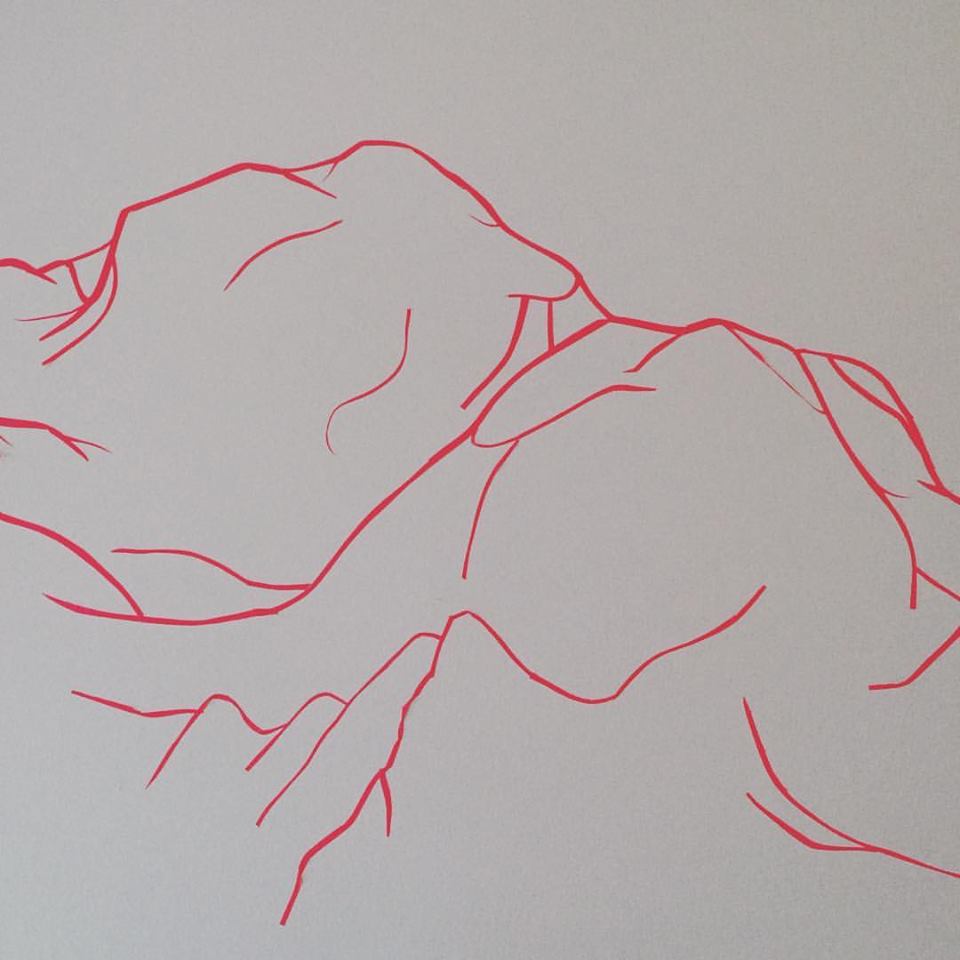
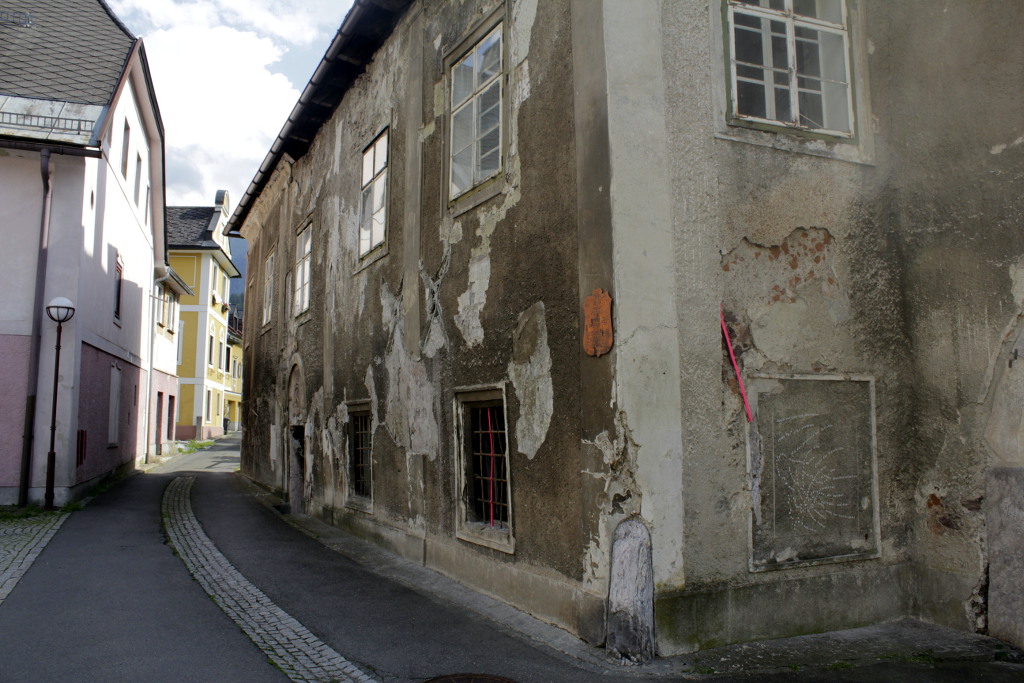
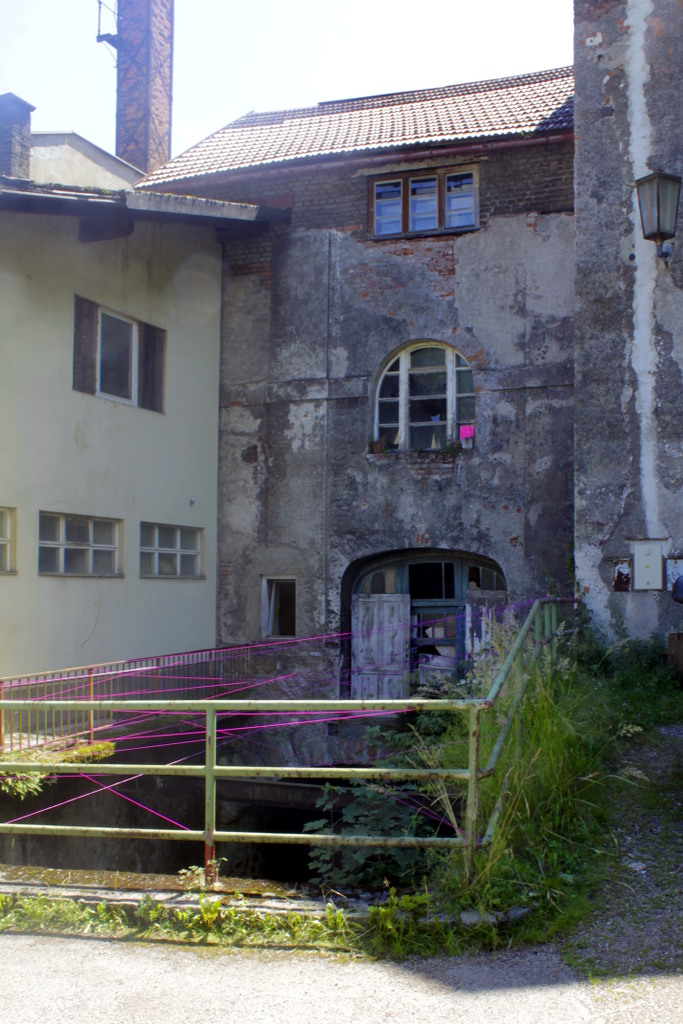
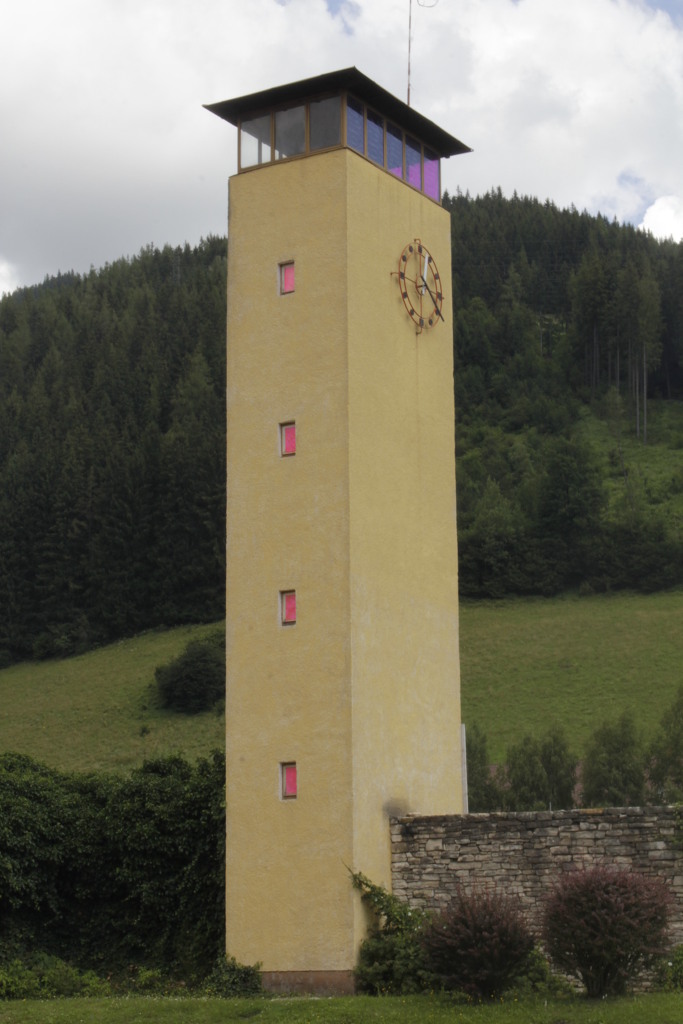
This project was very rewarding both from the collective working point of view as well as with respect to the collaboration of the local community. Private house owners, the housing cooperative, and the town council were all willing to help us, giving us permissions and access to the various sites, from to the crane of a former bakery to the tower of the sports stadium.